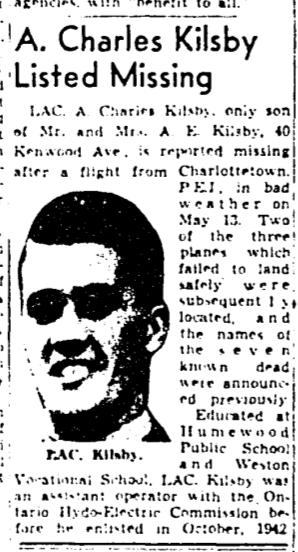
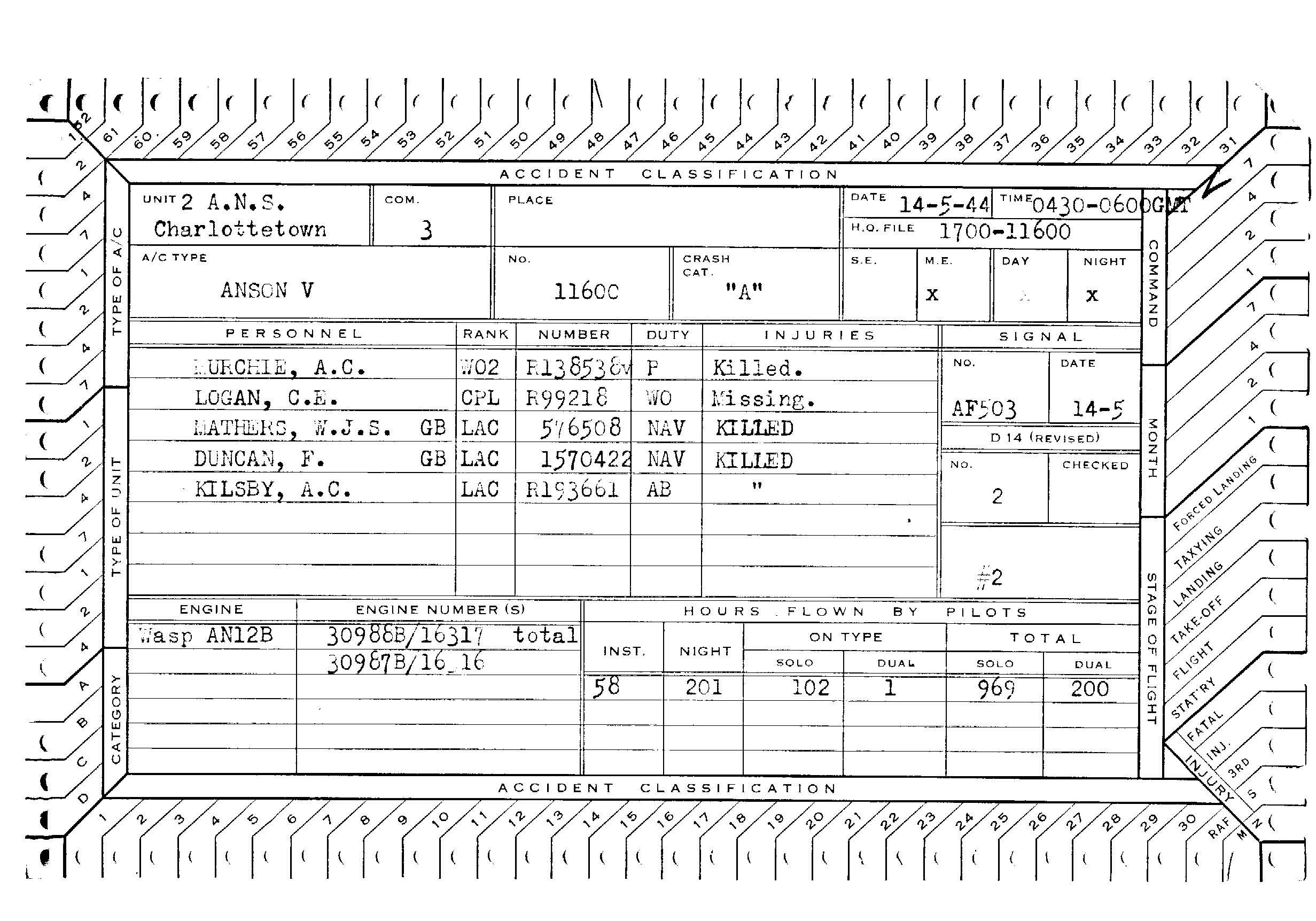
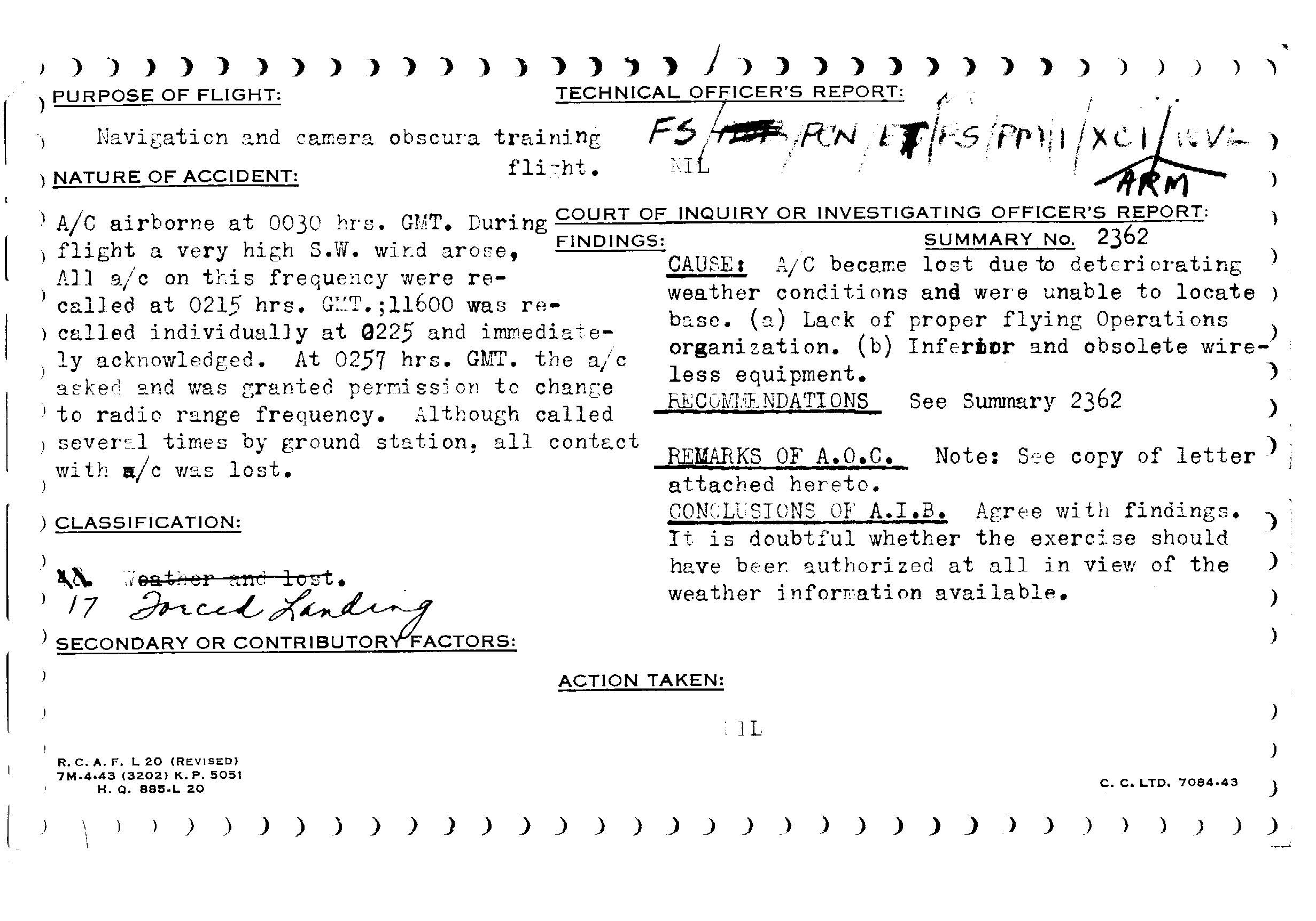
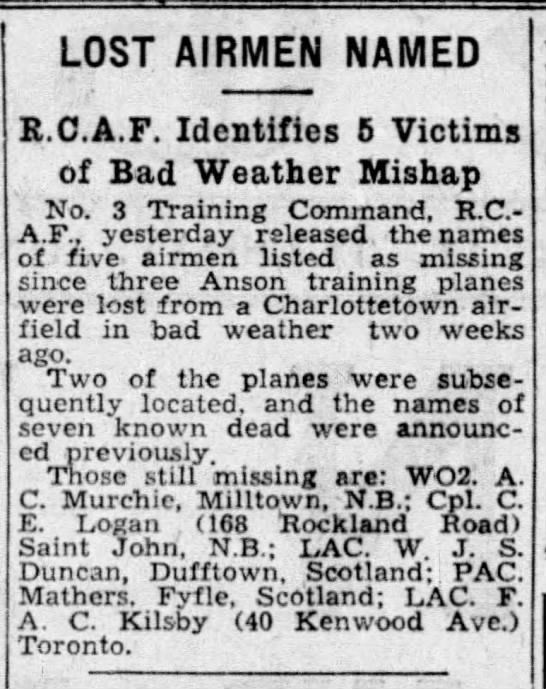

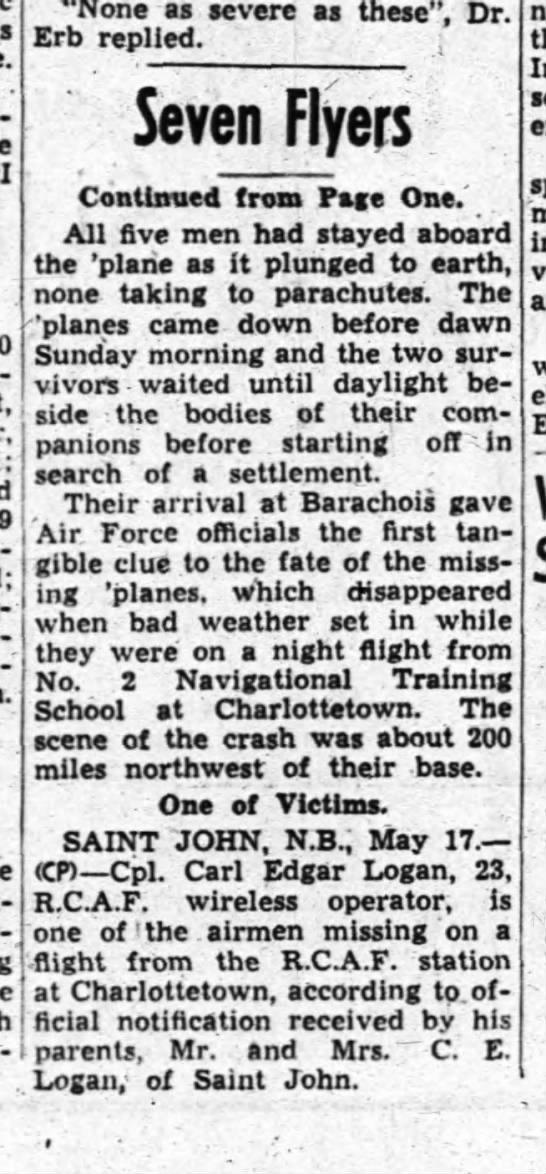
June 19, 1921 - May 4, 1944






Albert Charles Kilsby was the only son of Albert Kilsby (1890-1946), WWI veteran, plasterer, and Emma (nee Brown) Kilsby (1887-1969) of Toronto, Ontario. He had four sisters, Evelyn Alice Kilsby (1914-1998) and Jean Kathleen Laux (1921-1999), Vera Anne Kilsby, and Helen Marguarite Kilsby. The family was Anglican.
Albert, known as Charles, was an assistant power operator with HEPC when he enlisted with the RCAF, first in 1938 and then again in 1942, withdrawing his application in 1938. He had three years industrial/tech school and one-year electrical engineering technology. He felt his telephone repair skills with Northern Electric would be beneficial to the RCAF. He liked to swim, play rugby and baseball. After the war, he hoped to finish correspondence course “which I am now engaged” wanting to be an electrical engineer. Charles stood 5’11” tall and weighed 153 pounds. He had blue eys and brown hair, with a fair complexion.
He started his journey through the BCATP at No. 1 Manning Depot, Toronto, October 8, 1942 until January 9, 1943. From there, he was sent to No. 5 ITS, Belleville, Ontario until April 3, 1943. “A hard-working student, a bit slow in absorbing. Interested in electricity. Not positive and lacks confidence. Very anxious to make aircrew.” Alternate: Groundcrew. Charles was 101st out of 107 in his class with mid-70%.
He was then sent to No. 9 AOS, St. John’s, Quebec April 4 until August 28, 1943. In Ground work, he attained 61.3% and in Air work, he had 63.9%. Character and leadership: 56%. Albert failed. “Both air and ground work was characterized by inconsistency. Although extremely neat, air work lacked organization and in spite of a few very good exercises, results were mediocre. Ground school was only average in spite of an enthusiastic attitude and final examination failure resulted. Enthusiasm and good motivation were rendered ineffective from time to time by a nervous temperament engendered to some extent by immaturity. Characteristics of self-confidence and leadership were affected adversely as a consequence. Experience and subsequent maturity of though should improve this. Doubtful commission material.” Other comments: “Extensive navigational training plus eagerness to remain in aircrew should make this airman a most desirable type of air bomber. Remustered as an air bomber after eyes found to be satisfactory on medical recheck.” More comments: “Anxious to stay in aircrew at a job he can do well. Wants to get overseas into action. Very disappointed in Failing Nav. Course, but should be excellent air bomber. Conduct and attitude good.”
Lachine, Quebec and No. 5 Manning Depot was his next stop for about two weeks, when he was taken on strength at No. 6 SFTS, Dunnville, Ontario September 10, 1943 until February 12, 1944.
Charles was then at No. 31 B&G School Picton, Ontario until May 5, 1944. “83.4% in groundwork. 64% in air work. 70% in leadership and character. Above average pupil in groundwork. Average in air work.”
He was sent to Charlottetown, and No. 2 ANS May 6, 1944.
Anson 11600 was lost out of Charlottetown, PEI, during a night navigation exercise during bad weather on May 14, 1944. CREW: DUNCAN, LAC Frank (1570422, RAF)- KILSBY, LAC Albert C. (R193661, RCAF) - Anson 11600 LOGAN, Corporal Carl Edgar (R99218, RCAF) - Anson 11600 MATHERS, LAC William J.S. (576508, RAF), MURCHIE, WO Allan C. (R138538, RCAF, pilot). Duncan and Mathers were buried at the St. John’s (Mount Pleasant) Cemetery, their bodies washing ashore in June 1944. Duncan was 20 years old, son of Frank and Annie Jeannie Duncan of Dufftown, Banffshire, Scotland. Mathers was 21 years old, son of William John White Mathers and Agnes Mathers of Colinsburgh, Fife, Scotland. The names of Logan and Kilsby appear on the Ottawa Memorial. Murchie was buried at the St. Stephen Rural Cemetery, Charlotte Country, New Brunswick. He was 26 years old.
Charles’s personal effects were forwarded to his family by registered mail. He had $71.75 in his bank account, $145 in War Savings Certificates, and a $1000 life insurance policy. His mother wrote, “Referring to para 22, deceased was insured for $100 if he had died a natural death or $2000 if by an accident, but on account of him meeting his death by aircraft, the premiums will be refunded.”
LINKS: